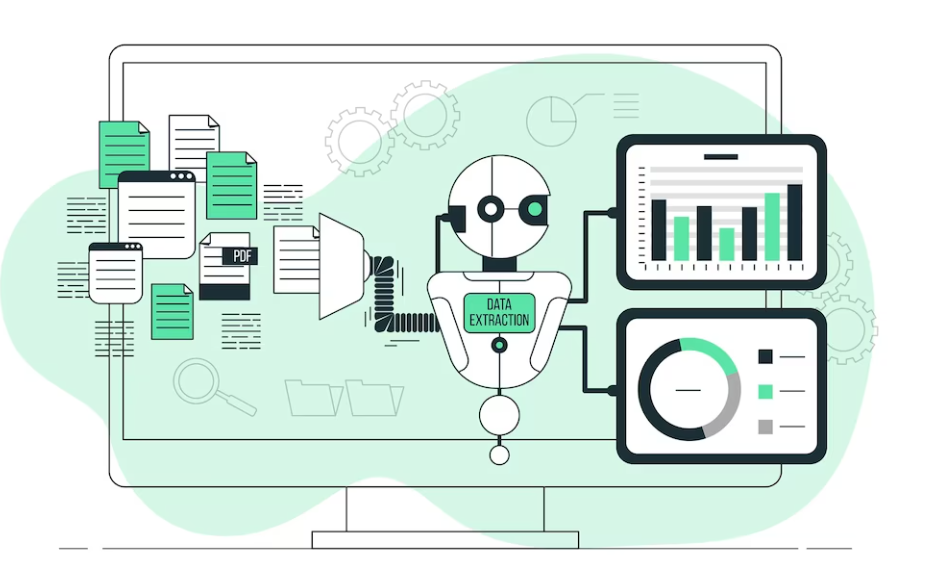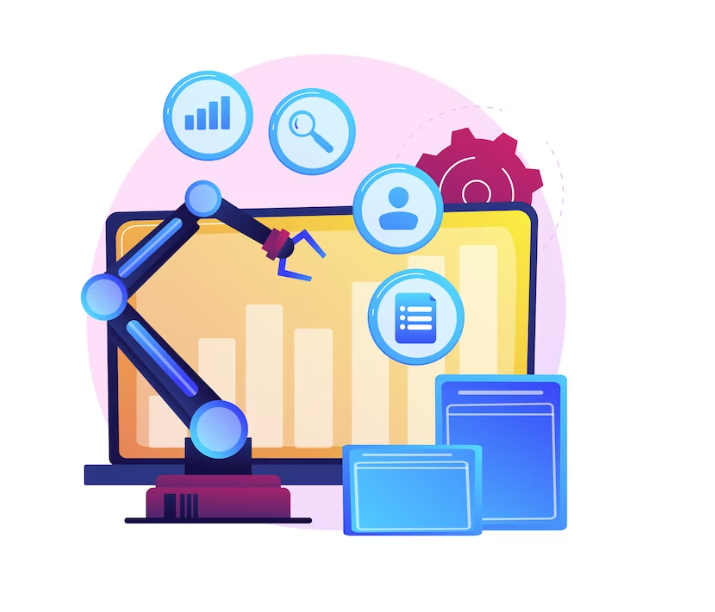Boost Efficiency and Crush the Competition with Digital Automation
As businesses continue to grow and evolve, there is a growing need for increased efficiency and productivity. One way to achieve this is through digital automation. In this article, we will explore what digital automation is and how it can help your business become more efficient and stay ahead of the competition.
Introduction to Digital Automation
Digital automation involves the use of technology to automate processes and tasks that were previously done manually. This can include anything from data entry and customer service to manufacturing and logistics. By automating these tasks, businesses can save time and money, improve accuracy, and free up employees to focus on more important tasks.
Advantages of Digital Automation
There are numerous advantages to implementing digital automation in your business. Here are just a few:
1. Increased Efficiency
Automating tasks that were previously done manually can significantly increase efficiency. Machines can work faster and longer than humans, and they don’t need breaks or time off. This means that your business can operate more efficiently and get more done in less time.
2. Improved Accuracy
Humans are prone to making mistakes, no matter how diligent they are. Machines, on the other hand, are not. Automating tasks can improve accuracy and reduce errors, leading to better quality products and services.
3. Cost Savings
By automating tasks, businesses can save money on labor costs. They can also reduce the costs associated with errors and inefficiencies, such as wasted materials or lost time.
4. Competitive Advantage
Implementing digital automation can give your business a competitive advantage. By increasing efficiency and reducing costs, you can offer products and services at a lower price point than your competitors. You can also improve quality and speed, which can help you stand out in a crowded market.
Supercharge Your Business with AI & Chatbot Development | Stoke Apps

Types of Digital Automation
There are many types of digital automation that businesses can implement. Here are just a few:
1. Robotic Process Automation (RPA)
RPA involves the use of software robots to automate repetitive tasks, such as data entry and processing. These robots can work 24/7 and can handle large volumes of data quickly and accurately.
2. Artificial Intelligence (AI)
AI can be used to automate tasks that require more complex decision-making, such as customer service or inventory management. By analyzing data and learning from past experiences, AI can make intelligent decisions and automate tasks that would otherwise require human intervention.
3. Internet of Things (IoT)
The IoT involves connecting devices and machines to the internet, allowing them to communicate with each other and share data. This can be used to automate tasks such as monitoring inventory levels or adjusting temperature settings in a warehouse.
Implementing Digital Automation
Implementing digital automation can be a complex process, but it can be well worth the effort. Here are some steps you can take to get started:
1. Identify areas for automation
The first step is to identify the areas of your business that could benefit from automation. This could include anything from data entry to manufacturing to customer service.
2. Evaluate automation options
Once you have identified the areas for automation, you need to evaluate the options available to you. This could involve researching different software solutions or consulting with experts in the field.
3. Plan and implement
Once you have chosen a solution, you need to plan and implement the automation process. This could involve training employees, testing the system, and making adjustments as necessary.
How Digital Automation Can Boost Efficiency Streamline processes
- Streamline processes: Digital automation can streamline processes by automating repetitive and time-consuming tasks. This frees up employees to focus on more important tasks that require human expertise, such as decision-making, problem-solving, and creative work. By streamlining processes, businesses can operate more efficiently, reduce costs, and increase productivity.
- Increase productivity: Digital automation can increase productivity by allowing machines to work faster and longer than humans. This means that businesses can get more done in less time, without sacrificing quality. In addition, automation can help to eliminate bottlenecks and reduce downtime, further improving productivity.
- Reduce errors: Humans are prone to making mistakes, even when they are diligent and well-trained. By automating tasks, businesses can reduce errors and improve accuracy. Machines are not prone to human error and can perform tasks with greater consistency and precision, resulting in fewer errors and better quality products and services.
- Improve decision-making: Artificial Intelligence (AI) can be used to automate tasks that require more complex decision-making, such as customer service or inventory management. By using AI to analyze data and make decisions, businesses can make more informed and accurate decisions, leading to better outcomes.
- Enhance customer experience: Digital automation can also enhance the customer experience by improving response times, reducing errors, and providing more personalized service. For example, chatbots can be used to provide instant customer support, and predictive analytics can be used to personalize product recommendations based on customer behavior and preferences.
The Impact of Digital Automation on the Workforce
As digital automation becomes more prevalent in the workplace, it’s important to consider its impact on the workforce. Here are some key points to keep in mind:
- How automation affects jobs: One of the primary concerns about automation is that it will eliminate jobs. While it’s true that some jobs may become obsolete, it’s important to remember that automation can also create new job opportunities. For example, as machines take over routine tasks, humans can focus on tasks that require more creativity and problem-solving skills.
- New roles and opportunities: As automation becomes more widespread, new roles and job opportunities are emerging. For example, data analysts, AI trainers, and robot maintenance technicians are in high demand. These new roles require a different set of skills than traditional jobs, such as programming, data analysis, and critical thinking.
- Preparing for the future of work: To stay competitive in the age of automation, it’s important for individuals and organizations to prepare for the future of work. This means developing new skills and adapting to new technologies. For individuals, this may mean pursuing training or education in areas such as programming, data analysis, or machine learning. For organizations, it means investing in employee training and development programs to ensure that their workforce has the skills needed to thrive in the age of automation.

Challenges of Digital Automation
While digital automation can provide many benefits to businesses, it also comes with its own set of challenges. Here are some common challenges that businesses face when implementing digital automation, and some solutions for overcoming them:
- Resistance to change: One of the biggest challenges of digital automation is resistance to change. Employees may be reluctant to adopt new technologies or processes, and may require additional training and support to make the transition.
Solution: To overcome resistance to change, it’s important to involve employees in the process from the beginning. Communicate the benefits of automation and involve employees in the design and implementation of automation solutions. Provide adequate training and support to ensure a smooth transition.
- Integration with legacy systems: Many businesses have legacy systems that were designed before the era of digital automation. Integrating these systems with new automation technologies can be a complex and challenging process.
Solution: To overcome integration challenges, it’s important to work with an experienced automation partner who can help you identify the best solutions for integrating legacy systems with new automation technologies. In some cases, it may be necessary to replace legacy systems entirely.
- Data security and privacy: Digital automation involves the exchange of sensitive data, which can create security and privacy concerns for businesses and their customers.
Solution: To overcome data security and privacy concerns, it’s important to implement robust security measures and follow best practices for data privacy. This may include using encryption, implementing access controls, and complying with relevant regulations such as GDPR and CCPA.
- Cost and ROI: Implementing digital automation can require a significant investment of time and resources, and businesses may be unsure of the return on investment (ROI) of automation solutions.
Solution: To overcome cost and ROI challenges, it’s important to carefully evaluate the costs and benefits of automation solutions before implementing them. Work with an experienced automation partner to identify the solutions that will provide the greatest ROI for your specific business needs.
- Maintenance and support: Once automation solutions are implemented, businesses need to ensure that they are properly maintained and supported over time.
Solution: To overcome maintenance and support challenges, it’s important to work with an automation partner who provides ongoing support and maintenance services. This will ensure that your automation solutions continue to operate smoothly and provide maximum value to your business.
Digital Automation Best Practices
Digital automation can be a powerful tool for increasing efficiency and productivity in the workplace. Here are some best practices to keep in mind when implementing digital automation:
- Start with a clear strategy: Before implementing any digital automation, it’s important to have a clear strategy in place. This means defining your goals and objectives, as well as the specific processes that you want to automate. By having a clear strategy, you can ensure that your automation efforts are aligned with your business objectives and that you are making the most of your investment.
- Choose the right technology: Choosing the right technology is critical to the success of any automation project. It’s important to choose a technology that is flexible, scalable, and easy to integrate with your existing systems. It’s also important to choose a technology that is user-friendly and can be easily adopted by your employees.
- Involve your employees: Automation can be disruptive to employees, so it’s important to involve them in the process from the beginning. This means communicating clearly about the benefits of automation and providing training and support to help them adjust to new ways of working. By involving employees in the process, you can ensure that they feel valued and invested in the success of the project.
- Monitor and measure performance: Once automation is implemented, it’s important to monitor and measure performance to ensure that it is meeting your objectives. This means tracking key metrics, such as productivity, efficiency, and error rates, and making adjustments as needed to optimize performance.
- Continuously improve: Digital automation is not a one-time event; it’s an ongoing process of continuous improvement. It’s important to regularly evaluate your automation efforts and look for ways to optimize performance and achieve even greater efficiency and productivity gains.
By following these best practices, businesses can implement digital automation in a way that is strategic, effective, and beneficial to both the organization and its employees.
The Future of Digital Automation
Digital automation is rapidly transforming the way businesses operate, and the future is likely to bring even more advances in automation technology. Here are some trends to watch in the future of digital automation:
- Artificial intelligence and machine learning: Artificial intelligence and machine learning are already being used in many automation applications, but these technologies are likely to become even more sophisticated and capable in the future. This will enable automation to be applied to more complex processes and decision-making tasks.
- Integration with the Internet of Things (IoT): The Internet of Things (IoT) is a network of interconnected devices that can communicate with each other and exchange data. As more devices become connected to the IoT, automation will be able to leverage this data to optimize processes and improve efficiency.
- Greater use of robotics: Robotics technology is advancing rapidly, and robots are becoming more capable and affordable. This will enable more businesses to automate physical tasks that were previously difficult or impossible to automate.
- Cloud-based automation: Cloud computing is already being used to deliver automation as a service, and this trend is likely to continue in the future. Cloud-based automation can be more flexible and cost-effective than traditional on-premises solutions, making it accessible to more businesses.
- Human-machine collaboration: As automation becomes more sophisticated, it will be able to handle more complex tasks. However, there will still be a need for human input and oversight in many cases. In the future, we can expect to see more collaboration between humans and machines, with automation handling routine tasks and humans focusing on more creative and strategic work.
Conclusion
In conclusion, businesses can greatly benefit from digital automation to boost efficiency, productivity, and customer satisfaction. However, challenges such as integration and data security must be addressed in order to fully realize these benefits. As a leading automation partner, we can help your business navigate these challenges and implement a successful automation strategy.
If you are interested in learning more about how we can help your business boost efficiency and crush the competition with digital automation, please don’t hesitate to contact us. Our team of experts is ready to discuss your unique needs and provide personalized solutions to help your business succeed in the digital age.
